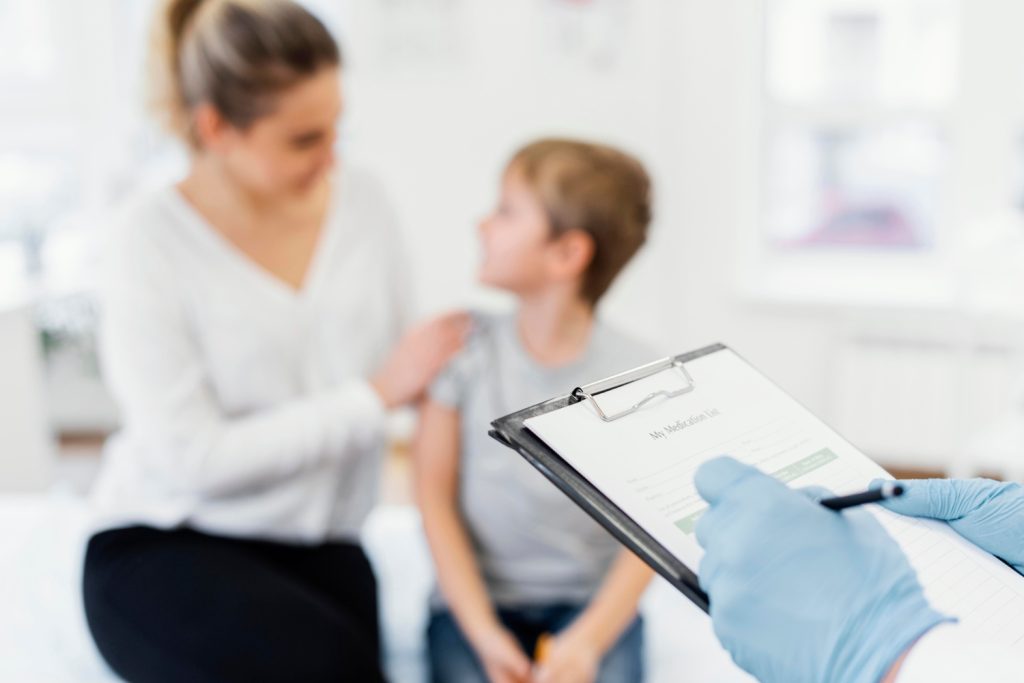Posted: 14/11/2025
Missed Diagnosis of Slipped Upper Femoral Epiphysis (SUFE) in A&E: A Diagnostic Pitfall
Reading Time: 3 minutes
Slipped Upper Femoral Epiphysis (SUFE) is a hip condition that predominantly affects children and adolescents, typically between the ages of 10 and 16. It occurs when the growth plate at the top of the femur (thigh bone) becomes unstable, causing the femoral head to slip in relation to the femoral neck. If not diagnosed and treated promptly, SUFE can lead to long-term complications such as hip deformities, early-onset arthritis, and, in severe cases, avascular necrosis (AVN), a condition in which the lack of blood flow causes bone tissue to die.
In the UK, the incidence of SUFE is estimated at around 4.8 cases per 100,000 children aged 0-16.
Research has shown a strong correlation between SUFE and elevated body-mass index (BMI) in affected children, with those diagnosed with the condition typically having a BMI significantly higher than the UK reference average prior to their diagnosis.
Several factors increase the likelihood of a child developing SUFE, including: –
- Rapid growth: Particularly during early adolescence, a period when bones and growth plates are more vulnerable.
- Sex: Boys are more frequently affected than girls.
- Endocrine disorders: Conditions such as thyroid issues or growth hormone deficiencies may contribute.
- Obesity: Overweight or obese children are at heightened risk due to the additional mechanical stress placed on the hip.
The Link Between Obesity and SUFE
Obesity is one of the most significant risk factors for SUFE, particularly in the UK where childhood obesity rates are rising. Overweight children are more likely to experience abnormal loading on their joints, particularly the hip, which increases the risk of the femoral head slipping.
The growth plate is a structurally weaker zone during adolescence, and additional body weight places greater stress on this vulnerable area, making slippage more likely.
Children with higher BMI often experience altered biomechanics in their hips. As a result, they may present with knee pain or general fatigue, which can be misinterpreted as “growing pains” rather than a serious hip condition.
Due to the misconception that overweight children simply have muscle strain or joint stiffness, the underlying problem of SUFE is often overlooked, contributing to delayed diagnosis.
Why SUFE is Often Missed in A&E
In emergency departments, several factors contribute to the underdiagnosis or misdiagnosis of SUFE, particularly when an overweight child presents with hip or knee pain.
SUFE often presents with knee or thigh pain, which can mislead clinicians into focusing on the knee joint rather than the hip. This referred pain is common, and as a result, the hip may not be thoroughly examined.
In cases where a child complains of knee pain or limps, clinicians may fail to perform the necessary hip examination, for example, testing for internal rotation or abduction, or assessing gait. Missing these critical steps significantly increases the risk of overlooking SUFE.
Even when an X-ray is ordered, if the correct views are not taken (specifically the anteroposterior and frog-leg lateral views), the subtle slippage of the femoral head can be missed. This can delay diagnosis and appropriate treatment.
Since SUFE is relatively rare, it may not be at the top of the differential diagnosis list, especially when knee pain or a limp is the primary complaint.

From a clinical negligence perspective, it is essential to consider whether a reasonably competent A&E clinician, upon seeing a child with knee pain or a limp (particularly an overweight child), should have included SUFE in their differential diagnosis. Failure to do so could result in liability if harm is caused by delayed diagnosis; timely diagnosis, thorough examination, and appropriate imaging are critical to preventing the long-term consequences of this potentially debilitating condition.
To avoid missing a diagnosis of SUFE, clinicians should: –
- Conduct a thorough examination: Any child between 10 and 16 years old presenting with knee, groin, thigh, or hip pain, especially if overweight, should have their hip examined thoroughly. Pay particular attention to internal rotation, abduction, and gait.
- Request the correct imaging: Always request anteroposterior and frog-leg lateral X-rays (or equivalent) of the hip to detect any slippage.
- Urgent referral: If SUFE is suspected, ensure the child is kept non-weight-bearing and an urgent referral to an orthopaedic specialist is arranged. Delays in referral should be carefully documented.
In conclusion, SUFE is a serious, albeit relatively rare, diagnosis that is frequently missed in A&E settings, particularly in overweight children. Due to its subtle presentation, often manifesting as knee or thigh pain rather than direct hip pain and its potential for significant long-term harm, a high index of suspicion is essential.
If you believe that your child has suffered a missed or delayed diagnosis of SUFE, our team is here to help. We have experience of successfully pursuing such cases; we can review your case, including the A&E notes, imaging, and follow-up care, to assess whether there has been a breach of duty and whether the delay has contributed to adverse outcomes. Please do not hesitate to contact us for advice or a consultation; we are ready to discuss your case and provide the support you need.
FRIENDLY, EFFICIENT LEGAL ADVICE
We’re ready to chat when you are
Drop us an email or give us a call for a no obligation chat to see if we can help.
